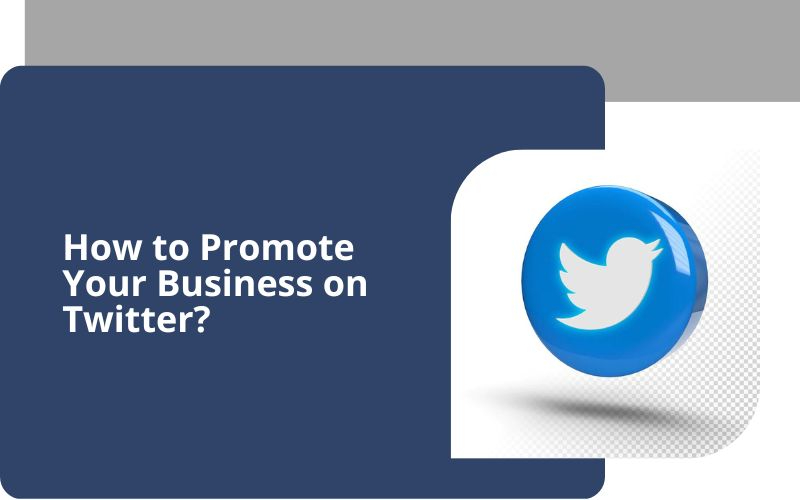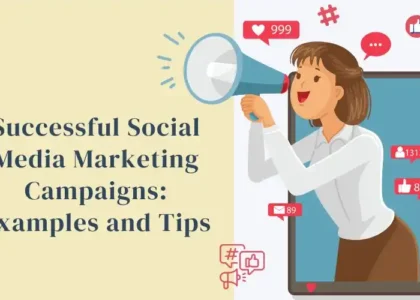What advantages do social media platforms offer to businesses? Think about the fact that there are already more than 4.2 billion active social media users worldwide.
If social media isn’t a part of your digital marketing strategy, you’re missing out on a quick, affordable, and efficient way to connect with roughly half of the world’s population.
Let’s examine how social media can connect you with your target market, encourage customer interaction, and expand your business.
Why Promote Your Business on Social Media?
Let’s start with a fundamental truth: every company requires a social media presence.
Managing a vast national corporation or a small local business doesn’t matter. The use of social media is not only a fad. It is a crucial component of your company’s marketing plan.
Social media by itself, however, is insufficient to promote business expansion. Social media platforms may help you build relationships with your customers, raise brand awareness, and improve leads and sales. However, it would be best if you began with a proactive mindset and a sound content marketing plan.
You are presently set up to launch your company’s social media, but you might not be aware of this. You don’t need to know every ominous phrase or have the optimum number of followers. You may get started straight away and even enjoy yourself.
Social media presents a massive opportunity for businesses since it exposes them to customers who use them daily. However, because it is a dynamic environment that is quite noisy and crowded, it also presents substantial challenges for companies.
- Social interaction helps you establish trust and authority.
- Your brand’s personality on social media helps reach new audiences with exciting content.
- You will have a clear strategy for distributing interesting material on social media.
Twitter is a highly effective tool for expanding your company’s internet reach. Twitter should be a component of your marketing strategy because it has many active everyday users.
In addition to being the fifth most popular social media platform, it’s a gold mine of customer data and prospects for growing your business, driving sales, and building an admiring audience.
However, with 500 million tweets made every day, you’ll need to be strategic and savvy to capture (and keep) the attention of your audience.
However, you must be able to stand out to be successful as a business on Twitter these days. For the millions of companies on Twitter, though, this may mean various things.
What actions can you take to improve your audience’s online experience instead of becoming a bother? How do you get people to want to buy your product or service by promoting it? How do you make your brand more human on a platform created for connection?
How to Promote Your Business on Twitter?
This handy guide was intended to aid you in creating a successful plan and harnessing the power of Twitter for your business. To learn how to use Twitter for business this year, keep reading.
1. Create an Eye-Catching Profile.
To ensure success, you must first customize your profile. Because you have a Twitter egg as your profile image, the last thing you want is someone to ignore your Twitter account — and maybe forget your business.
You should make sure your profile photo and Banner are both visually appealing. While many businesses use their logo as their profile image, the Banner allows you to be more creative with your colors and imagery.
Although it may seem easy to use your brand name as your Twitter username, there are a lot of Twitter accounts. What happens if your given name is already taken?
You can add a CTA at the beginning of your company name if your brand name is already used as someone else’s handle.
Let’s say your company’s name is “XYX,” but the handle is already used. Other acceptable choices are “@GetXYZ” and “@ChooseXYZ.”
2. Add Value With Content.
Adding value to your Twitter post is similar to adding value to other forms of marketing content. Because strong inbound content aims to make your readers feel as if you’re speaking directly to them, your buyer personas should always be kept in mind.
Take into account whether your tweets add value by advancing an idea, entertaining, or educating your audience.
Your material will likely fall flat if you don’t have any of those three characteristics. Also, keep in mind that the goal of Twitter is to connect people and start dialogues.
It’s not worth posting content that doesn’t elicit discussion. It would help if you attempted to make the most of your 280-character limit on Twitter.
3. Make Your Content More Optimized.
Since you’ve added value to your material, you want to ensure people see it. You can use a few different ways to optimize your content on Twitter.
Hashtags are a simple and ubiquitous technique to promote your material, but you should limit the number of times you utilize them. You may come across as spammy or as trying to grab attention if you use too many hashtags.
Said, don’t overuse hashtags. As per the tweet, limit your hashtags to one or two relevant ones. Also, you should research hashtags to get your material seen by more people.
Determine which hashtags your target audience is already using to discuss your business, and then use them yourself.
4. Enter the World of Paid Work.
There are two ways to get paid media on Twitter:
- Tweets that have been promoted
- Advertisements on Twitter
Users will see promoted tweets in their search results or in their feed. Your company pays for a user not already following your account to see the tweet.
In addition to being able to retweet, like, and quote a promoted tweet, it behaves exactly like a regular tweet. Twitter will include your promoted tweets in a daily campaign that targets the type of audience you specified in your settings.
If you want to promote a variety of tweets to achieve a specific goal or advance a campaign, Twitter advertisements are an intelligent choice.
5. Use a Twitter Tool To Help You.
When using Twitter for business, logging in every time you want to make a post can be inconvenient and time-consuming.
You can schedule tweets in advance using several apps available, so you don’t have to click “Tweet” every day.
6. Keep an Eye Out for Updates.
Keep Twitter’s golden rule in mind at all times:
Twitter users want to know what’s happening right now.
You must stay in contact with your niche in this case.
Learn about current industry trends, your target audience’s interests, and what your competitors are up to.
Also, keep up with the latest news and events that are taking place. Consider implementing a social listening strategy. Are you familiar with social listening?
You can use social listening to learn what your customers think about your brand, products, and service. It’s about keeping track of what’s happening, analyzing what’s happening, replying to comments, and participating in discussions.
This is your opportunity to get to know your current and potential new customers and learn what they expect from your brand.
7. Make Use of Photographs, Animated GIFs, and Polls.
Twitter allows you to include up to four photos in a tweet. You may also add graphics to your tweets by creating graphic design. Are you not a Photoshop wizard? Several graphic design tools are available on the internet to assist you in making the image you require.
Including photographs and GIFs in your tweets is an excellent approach to engaging your audience. Using Twitter’s built-in GIF keyboard, you can search for a term and select an appropriate GIF.

Interacting with your Twitter followers is critical to keeping customers engaged in your company. These simple steps can help you create a poll that engages your followers:
- Click the “compose” box at the top of your timeline.
- The “add poll” icon, which resembles a horizontal graph, should be clicked.
- Type your question in the “compose” box.
- Your first poll response should be Option 1, and your second poll response should be Option 2. In your poll, you can include up to four answer alternatives, each of which can be up to 25 characters long.
- The poll is usually active for 24 hours, but you can shorten it if you wish.
8. Analyze the Outcomes.
Once you have set your objectives and goals, you can quickly gauge the results of your performance on any social networking platform. Goals can also help you identify when your plan isn’t functioning and point you in the right direction.
When you click on your profile at the top right corner of your Twitter dashboard, you’ll see a drop-down menu where you can access Twitter analytics.
Consider focusing less on vanity metrics as you assess your Twitter performance. Vanity metrics are typically high figures that look nice on paper but don’t help you accomplish your company goals, such as impressions or follower count.
Suppose you want to determine which content is most popular with your audience and which content converts the most leads. In that case, it is more important to know how many people clicked the link that you tweeted or how many people interacted and engaged with you out of your total audience number.
How To Create a Business Profile on Twitter?
The four essential components of a Twitter profile will be broken down along with advice and recommendations for each section.
1. Your header image and profile picture
Select a profile picture that effectively communicates your identity and will fit in the small, circular area that generally houses your logo. This is the emblem linked to each Tweet you make; it’s not simply on your profile. The suggested size is 400×400 pixels.
Yor header image ought to be a dynamic billboard advertising the latest developments. This may be a new photoshoot that perfectly captures your current feel, an impending launch or campaign, or both. To keep things exciting and fresh, update it every three months. 1500×500 pixels is the suggested size.
Ensure that both images are crisp, of good quality, and maintain visual harmony in JPG, GIF, or PNG format, upload photos.
2. Your account @name and display name
What follows the “@” is your account’s @name. It is particular to you, shows up in the URL of your profile, and is connected to everything you do on Twitter. It should be closely related to your company’s name and can be up to 15 characters.
Your display name, which is always editable, is displayed directly above your @name. Having this as the name of your brand or company is an intelligent practice. It has a 50-character maximum.
3. You bio
Use your standard elevator pitch as a model. One hundred sixty characters are all you have to present yourself to the world. Inform them of what you do, your benefits, and why they should follow you.
Link directly to your website. Add a link to the page you want people to view right away. As an alternative to your homepage, consider your “About” page or the landing page of your most recent campaign. To track people who come to your website from Twitter, use a unique URL.
Include your location, even if you are only online. You can consist of your headquarters, founding city, or destinations you ship to. This enables you to connect with and reach out to local supporters.
If you own a physical business, list your current hours.
4. Your tweeted pin
Your most important, most recent news is what you want your fans to concentrate on. If you have the same topic for several months in a row (for instance, if you’re raising money over six months, then the same Tweet will work), that is fine, but you should periodically assess whether you have a more urgent message to emphasize.





